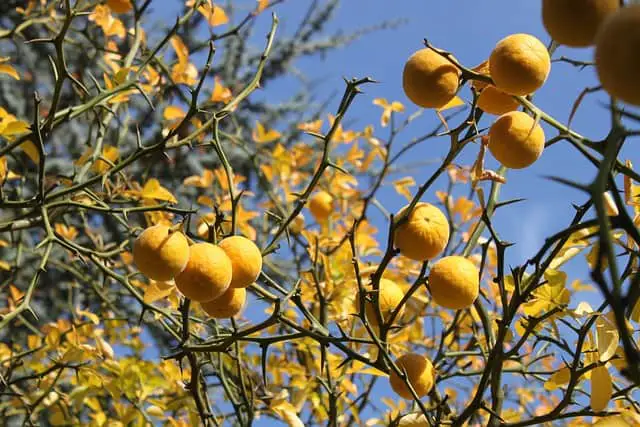Tangerine wood is not a common wood used for smoking food. In fact, it is quite rare to find tangerine wood specifically harvested and prepared for smoking purposes. While some fruit woods like apple, cherry, and peach are popular choices for smoking, tangerine wood is not typically used in the same way.
I was only able to find a single reference to a home smoker using tangerine wood to successfully smoke pork loin on a food smoking chatroom. A few respondents were pleasantly surprised to see the results since tangerine wood really isn’t known for its smoking ability.
You can certainly other citrus wood for smoking foods such as orange, osage orange, lemon, lime and even other fruits like nectarine.
Tangerine Trees Are Mostly Known For Their Fruit
The main reason for this is that tangerine trees (Citrus reticulata) are primarily cultivated for their delicious fruit rather than their wood. As a result, tangerine wood is not widely available, and there is limited information on its suitability for smoking food.
When it comes to smoking food, it’s generally best to stick with traditional and well-known smoking woods like hickory, mesquite, oak, cherry, and apple, as they have been proven to impart pleasant and familiar flavors to various meats and other foods.
Tangerine Wood Does Have Some Commercial Uses
Tangerine wood, derived from tangerine trees (Citrus reticulata), is not a widely utilized wood for commercial purposes due to several factors. Tangerine trees are primarily cultivated for their delicious fruit rather than their wood, which is smaller in size and often less suitable for industrial applications. As a result, the use of tangerine wood is limited and not as prevalent as other more common wood types.
However, in certain local and traditional settings, tangerine wood may find some limited uses. Here are a few examples:
- Crafts and Small Items: Tangerine wood’s fine-grained and aromatic properties make it suitable for crafting small decorative items, such as figurines, trinkets, or wooden toys.
- Cooking and Flavoring: The dried peels of tangerines, which are technically not the wood but a part of the fruit, are used for flavoring in cooking, baking, and making beverages like herbal teas.
- Incense and Aromatherapy: Tangerine wood or its dried peels can be used to produce aromatic incense or for aromatherapy purposes, releasing a pleasant citrusy scent when burned.
- Art and Woodworking: Some local artists and hobbyists may use tangerine wood for small woodworking projects and artistic creations.
It’s important to note that tangerine wood is not typically used for construction, larger furniture pieces, or heavy-duty applications due to its limited availability, smaller size, and specific characteristics.
In general, tangerine wood’s usage is more closely tied to small-scale and niche applications, with its primary value often being related to its appealing fragrance and the association with the fruit itself rather than its broad commercial use as a versatile timber.

Final Thoughts
Tangerine wood isn’t typically used for smoking foods but the good new is that you plenty of other woods to chose from.
If you’re interested in experimenting with different wood flavors for smoking, it’s essential to ensure that the wood is safe for food use, free from any harmful chemicals or additives, and properly seasoned to produce the desired results.
In conclusion, while tangerine wood may have a pleasant aroma when burned, it is not commonly used or recommended for smoking food. Stick to tried-and-tested smoking woods to achieve the best results in your culinary adventures.

